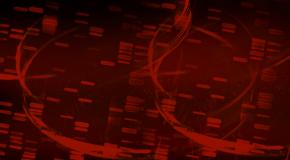- The CIO’s role is expected to become increasingly strategic as IT adoption accelerates… Many healthcare CIOs already occupy “dramatically more strategic” positions within their organisations than a decade ago: “We create solutions that speak to key business issues such as competitiveness and patient safety—many more areas that we previously did not get actively involved in,” says one interviewee. Currently, however, the survey shows only a minority are involved in boardroom discussions on any major strategic initiative. And over half the respondents (53%) say they spend 75% of their time on operations and just 25% on strategy. But a majority (62%) says their role will become increasingly crucial to their organisation as the IT revolution gathers pace.
- …but others may not see it that way; CIOs will have to educate the board. The realisation that IT will be increasingly crucial across all aspects of healthcare provision may not be appreciated by all stakeholders: some 70% of respondents in the survey say that IT is still regarded in their institutions principally as a support function rather than a strategic one. “Even though we are no longer tactical, operational order-takers, many people outside the IT organisation still see us the way we used to be years ago, not how we actually are now,” says one interviewee. Successful CIOs therefore must not only become more strategic, they must also be seen to be more strategic—by educating senior management on what they are doing and what the benefits are.
- CIOs also need to secure the buy-in of clinical staff when planning and rolling out new IT. Changing the behaviour of those who use the technology—doctors, nurses and other staff—may be a greater challenge than managing board-level expectations. In the survey, 86% of respondents say they actively participate with clinical leaders in their organisations. This is increasingly important because CIOs need to secure clinical buy-in for new technologies, for instance by using senior physicians to champion technology among clinical teams and by demonstrating improved outcomes. In addition, sufficient time must be devoted to training clinical staff once the investment has been made. In the survey, CIOs see training staff as behind only enabling system and network security and improving cost efficiency as among the principal functions of their department (cited by 51% of respondents).
- While regulation to drive IT adoption is broadly welcomed, some CIOs remain sceptical about government incentives—and fear new regulations may make their lives more difficult. The Obama administration’s promise of US$19bn in incentives to offset the cost of introducing electronic health records (EHRs) and other money-saving technologies (part of the US$787bn American Recovery and Reinvestment Act) is broadly welcomed by CIOs to “bring healthcare into the 21st Century”. Some 77% of respondents expect to qualify for funding, which will be granted on the condition healthcare organisations meet complicated “meaningful use” criteria. But many are not counting on the money to defray the cost of implementing the new technologies and are sceptical it will be delivered. Moreover, many expect the regulations tied to the incentives (and penalties) to bring considerable complications. Some 76% of survey respondents rate meeting “meaningful use” requirements as a high priority for the IT department, suggesting how time-consuming this will be.
- Many CIOs expect digitisation of electronic health records will bring more pressure on them to ensure compliance. An overwhelming majority of respondents to the survey, some 83%, agree or strongly agree that greater use of EHRs will put more pressure on CIOs to ensure compliance, and 71% say that data security to ensure compliance is a top priority when adopting new IT systems. This increased pressure is an inevitable corollary of making files easier to access through digitisation, and of stringent new rules that require information be both shared with more people on demand, but also be protected from unauthorised access.
- CIOs face big challenges in driving change. The most obvious obstacle is cost. In the survey, 62% of respondents rate the high cost as the greatest barrier to adopting cutting-edge IT solutions, while 49% note the lack of funds for investment. Ensuring integration of systems, to enable the exchange of information, will also be a major challenge, with many CIOs sceptical of the benefits of health information exchanges. Finally, many also cite the lack of IT staff with the right skill sets as a major challenge, with 24% of respondents ranking it in the top three barriers to the implementation of new IT systems.
Multimedia:








